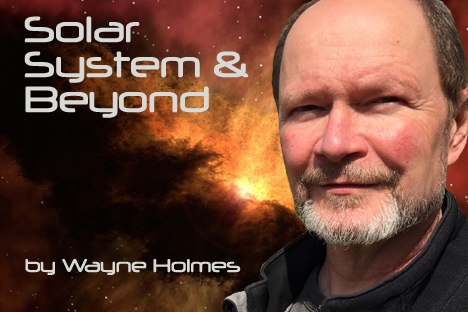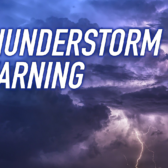Venus and Mars conjuction in eastern sky
Local Astronomer Wayne Holmes has had an interest in astronomy since he got his first telescope and began reading about the objects in the sky at a young age. As the coordinator of the Starry Nights program at Taghum Hall as well as multi session astronomy classes as part of the Learning in Retirement program and astronomy programs for schools, Holmes has always had a desire to sky gaze. Thankfully, Holmes has agreed to share his knowledge with a column, Solar System and Beyond that will appear occasionally in The Nelson Daily.
If you are outside in the early pre-dawn hours of October 17th, you may be treated to another Venus and Mars conjuction in the eastern sky, but this time a thin crescent Moon will join the two planets. Look for the Moon one degree from tiny orange Mars and six degrees above bright Venus, just before sunrise.
Binoculars will help you spot Mars.
To measure distances in degrees, hold your hand out at arm’s length, the width of your little finger is roughly one degree. Your three largest fingers held together is about five degrees and the width of your fist is ten degrees.
During the next couple of weeks, if you are in a truely dark location before dawn and have a fairly low eastern horizon, you may notice a faint, vertical shaft of light in the eastern sky that looks like an offshoot of the Milky Way. This is zodiacal light and is caused by sunlight scattered off interplanetary dust particles in the ecliptic plane, the apparent path of the Sun around the sky. Although it is not known for sure, it is believed that these particles, many smaller than a tenth of a millimetre, may be material ejected from comets. Fans of the rock group Queen, may be interested to know that one of the people studying Zodiacal dust when he is not performing with the band, is the group’s guitarist and song writer, Brian May Ph.D.
When most people talk about seeing meteor showers, they are usually refering to August’s Perseid meteor shower or possibly the splendid Geminid shower in December. There are however, a number of meteor showers throughout the year.
From Friday night, October 20th, through to the early morning hours of Saturday, October 21st, the Orionid meteor shower peaks under a mostly Moonless sky. The shower’s radiant lies in the constellation of Orion the hunter, which rises in the east around 11:00pm. This is the time you should start watching. You won’t see the 70 to 80 meteors per hour that you would expect from the Perseids or Geminid meteor showers, but if you are in a reasonably dark location, you could spot a dozen to twenty meteors per hour and you may see a few Earth-grazing meteors with dramatic long tails. The meteors that you see during the Orionids are the ejected paticles from Halley’s comet.
Saturn is still the only one of the naked-eye planets that can be viewed in the evening and it is getting lower in the southwest each day. On October 24th, look for Saturn five degrees below the waxing crescent Moon.

























